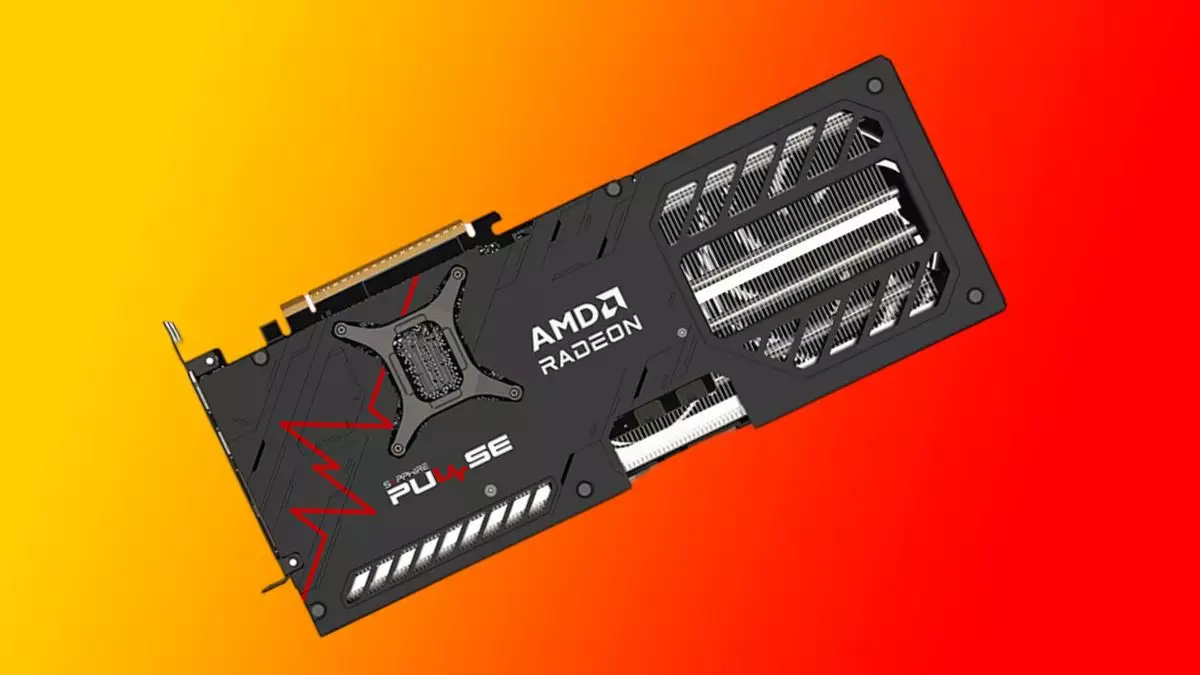If you’re one of the fortunate gamers or content creators to recently acquire an AMD Radeon RX 9070 XT or non-XT variant, it’s time for a friendly reminder: double-check your graphics card for any protective foam that may have been overlooked. This specific concern primarily pertains to users of the Sapphire Pure Radeon RX 9070 XT Gaming OC, Pulse Radeon RX 9070 XT Gaming, and Pure Radeon RX 9070 Gaming OC models. Recently, Sapphire Japan issued an alert on social media, shedding light on a lesser-known aspect of the installation process that could impact the performance of these powerful cards.
The warning revolves around the cushioning material that is meant to ensure the product’s safety during shipping. Unfortunately, it seems there’s a prevalent risk that many users might neglect to remove this foam prior to setting up their systems. The cushioning is designed to protect delicate components from potential damage during transit, but if left in place, it could lead to overheating or, even worse, product failure.
The Hidden Risks of Ignoring the Foam
First and foremost, let’s be clear: removing the foam is not a complex task. However, it is critical to understand the implications of failing to do so. Sapphire’s communication underscores the importance of this step, stating that neglecting the removal can lead to decreased cooling efficiency. High temperatures in a graphics card can be more than just a nuisance; they may shorten the lifespan of your expensive hardware and throttle performance.
If you’ve noticed that your RX 9070 series card is underperforming or running hotter than expected, this foam might just be the culprit obstructing your ability to unleash the card’s full potential. A simple removal process could significantly improve cooling efficiency, thus enhancing overall performance.
Navigating the Removal Process
Sapphire, alongside Ask Corporation, outlines a careful but straightforward approach to removing the cushioning. Users are advised to gently extract the foam from the designated areas indicated in their instructional images. It’s crucial to avoid using sharp objects that could inadvertently damage the graphics card during this process. The advice to be cautious not to slice through with a cutter or screwdriver is especially pertinent; precision in handling is key to maintaining the integrity of this sensitive hardware.
Moreover, those apprehensive about voiding their warranties can breathe easy. Sapphire explicitly confirmed that removing the protective foam will not negate the warranty, which is a considerable relief for many concerned users. Always a wise move, readers are encouraged to document any modifications made for their peace of mind.
Other Protective Materials: A Double-Edged Sword
It’s worth noting that while the foam may be problematic, it is not the only protective material associated with Sapphire cards. A thin sponge is also affixed to the heat sink of the NITRO+ model; however, this particular sponge plays a critical role in protecting cables. Users need to discern between the pieces that require removal and those that don’t—a proposition that can easily result in frustration for the uninformed enthusiast.
This situation serves as an important reminder for users across the board to inspect their graphics cards, both inside and out. Packaging elements ensure the safe arrival of products, but they can become hidden hazards if overlooked. Taking the time to check can mean the difference between optimal performance and a sluggish experience riddled with complications.
The Community Response and Implications
As news of this issue circulates through online forums, responses have ranged from amusement to frustration among the gaming community. The situation underscores a broader conversation about consumer diligence in hardware setups. While manufacturers go to great lengths to safeguard their products, the onus ultimately falls on the user to verify that all aspects, including packaging materials, have been properly managed.
This incident shines a spotlight on the responsibilities of both manufacturers and consumers alike. By prompting users to take proactive measures in maintaining their graphics cards, we can foster a culture of thoroughness that not only ensures individual satisfaction but also enhances the longevity of high-performance gaming equipment.
Embracing this mindset can lead to a heightened awareness of what it means to be a discerning consumer in today’s high-tech world. So, the next time you unbox a shiny new graphics card, remember: a little extra attention can go a long way toward safeguarding your investment.


Leave a Reply